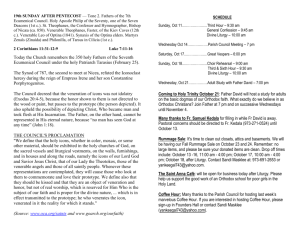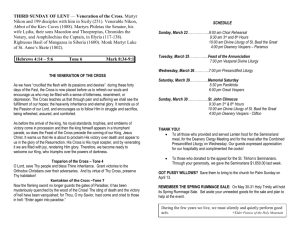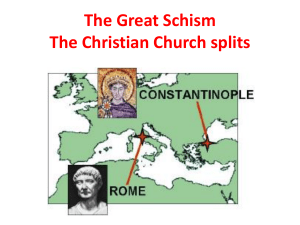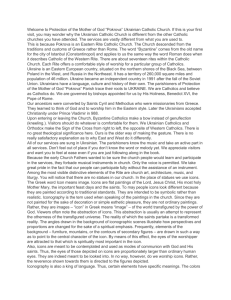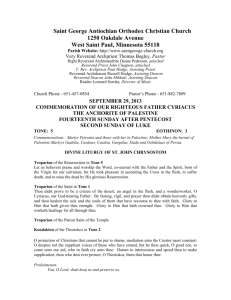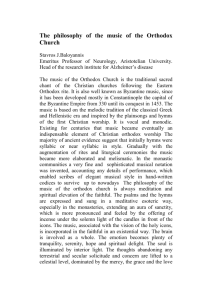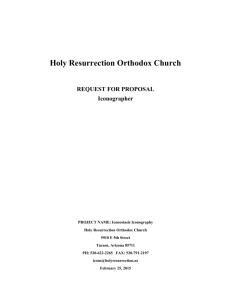THE DIFFERENCES BETWEEN AN ORTHODOX CHURCH AND A
advertisement
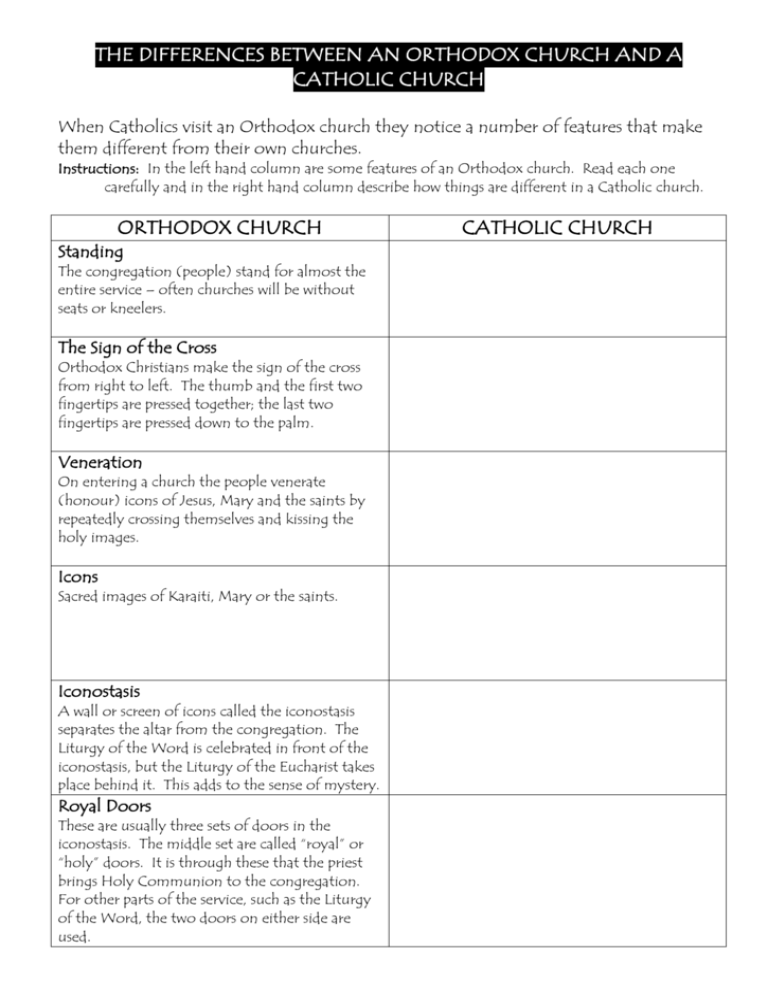
THE DIFFERENCES BETWEEN AN ORTHODOX CHURCH AND A CATHOLIC CHURCH When Catholics visit an Orthodox church they notice a number of features that make them different from their own churches. Instructions: In the left hand column are some features of an Orthodox church. Read each one carefully and in the right hand column describe how things are different in a Catholic church. ORTHODOX CHURCH Standing The congregation (people) stand for almost the entire service – often churches will be without seats or kneelers. The Sign of the Cross Orthodox Christians make the sign of the cross from right to left. The thumb and the first two fingertips are pressed together; the last two fingertips are pressed down to the palm. Veneration On entering a church the people venerate (honour) icons of Jesus, Mary and the saints by repeatedly crossing themselves and kissing the holy images. Icons Sacred images of Karaiti, Mary or the saints. Iconostasis A wall or screen of icons called the iconostasis separates the altar from the congregation. The Liturgy of the Word is celebrated in front of the iconostasis, but the Liturgy of the Eucharist takes place behind it. This adds to the sense of mystery. Royal Doors These are usually three sets of doors in the iconostasis. The middle set are called “royal” or “holy” doors. It is through these that the priest brings Holy Communion to the congregation. For other parts of the service, such as the Liturgy of the Word, the two doors on either side are used. CATHOLIC CHURCH THE DIFFERENCES BETWEEN AN ORTHODOX CHURCH AND A CATHOLIC CHURCH - ANSWERS When Catholics visit an Orthodox church they notice a number of features that make them different from their own churches. Instructions: In the left hand column are some features of an Orthodox church. Read each one carefully and in the right hand column describe how things are different in a Catholic church. ORTHODOX CHURCH Standing The congregation (people) stand for almost the entire service – often churches will be without seats or kneelers. The Sign of the Cross Orthodox Christians make the sign of the cross from right to left. The thumb and the first two fingertips are pressed together; the last two fingertips are pressed down to the palm. Veneration On entering a church the people venerate (honour) icons of Jesus, Mary and the saints by repeatedly crossing themselves and kissing the holy images. Icons Sacred images of Karaiti, Mary or the saints. Iconostasis A wall or screen of icons called the iconostasis separates the altar from the congregation. The Liturgy of the Word is celebrated in front of the iconostasis, but the Liturgy of the Eucharist takes place behind it. This adds to the sense of mystery. Royal Doors These are usually three sets of doors in the iconostasis. The middle sets are called “royal” or “holy” doors. It is through these that the priest brings Holy Communion to the congregation. For other parts of the service, such as the Liturgy of the Word, the two doors on either side are used. CATHOLIC CHURCH During a Catholic service people will knee, sit and stand. E.g standing for the Gospel, sit for the first readings and the homily, stand during the Liturgy of the Eucharistic but kneel after for silent reflection. Catholic make the sign of the cross with their right hand, from left to right. The hand is flat when this is done. When Catholics enter a church they bless themselves with holy water. Before entering the pew they will genuflect in the direction of the tabernacle or the crucifix. In Catholic churches there are statues of Mary and perhaps other saints and some holy pictures or pictures of the pope. There is no barrier between the altar and the congregation. Scripture is read from the lectern and the Liturgy of the Eucharist takes place on the altar where all people can see. There are no doors that separate the priest from the people. The priest and ministers of the Eucharist bring communion to the people from in front of the altar – people line up to receive it.

